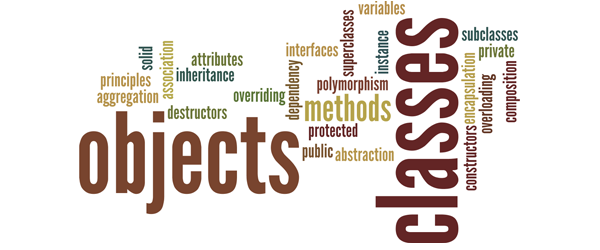Harnessing the Essence of Classes and Objects

Think of a toolbox – it holds different tools, each with a specific purpose. In the vast world of software engineering, Classes and Objects work in a similar way. These concepts are the building blocks that engineers use to create powerful, dynamic, and efficient software. Don’t worry if it sounds like jargon; we’re here to break it down into simple terms, just like your favorite subjects in school.
Understanding Classes and Objects
Imagine you’re designing a character for a video game. The character has attributes like name, health, and abilities. Classes and Objects are like blueprints and instances for creating these characters. A class defines the attributes and behaviors a character can have, while an object is a specific character created based on that class.
Why Do We Need Classes and Objects?
Imagine baking cookies – you have a recipe (class) that defines the ingredients and instructions. When you bake the cookies, you’re creating instances (objects) of those recipes. Similarly, in software, we use classes to define the structure and behavior of different elements, and objects to create specific instances based on those definitions.
How Do Classes and Objects Work?
Think of classes as templates and objects as the actual things created from those templates. For example, consider a class “Car” – it defines attributes like color, brand, and speed. Now, you can create objects like “Blue Toyota” or “Red Ferrari” based on that class. Each object has its own values for the attributes defined in the class.
Benefits of Classes and Objects
Modularity: Just like having a set of different LEGO pieces to build various things, classes and objects allow engineers to create modular and reusable components. If you need a car in different parts of your software, you can create an object from the “Car” class each time.
Efficiency: Think of it as baking cookies for a party. Instead of making each cookie from scratch, you can use the same recipe to create multiple cookies. Similarly, classes and objects save time by allowing engineers to create similar elements without repeating the same code.
Flexibility: Imagine having a toy set with interchangeable parts. You can mix and match to create different toys. Similarly, classes and objects provide flexibility by allowing engineers to modify or extend existing structures to suit new requirements.
Real-Life Example
Consider building a game. You might have classes like “Player,” “Enemy,” and “Item.” Each class defines attributes and behaviors specific to that entity. For example, the “Player” class might have attributes for health and abilities. Then, you create objects of these classes to represent the actual entities in the game – a player, an enemy, and an item.
Code Example
In the following example, we’ve defined a Car class with attributes like brand, color, and speed. The class also has methods to accelerate, brake, and display car information. We then create two car objects (car1 and car2) and demonstrate how to use the methods to manipulate and display the car information.
// Define a Car class
class Car {
String brand;
String color;
int speed;
// Constructor
public Car(String brand, String color) {
this.brand = brand;
this.color = color;
this.speed = 0;
}
// Method to accelerate the car
public void accelerate(int amount) {
speed += amount;
}
// Method to brake the car
public void brake(int amount) {
speed -= amount;
if (speed < 0) {
speed = 0;
}
}
// Method to display car information
public void displayInfo() {
System.out.println(color + " " + brand + " is moving at " + speed + " km/h.");
}
}
public class Main {
public static void main(String[] args) {
// Create car objects
Car car1 = new Car("Toyota", "Blue");
Car car2 = new Car("Ford", "Red");
// Accelerate and display car information
car1.accelerate(50);
car1.displayInfo();
// Brake and display car information
car2.accelerate(30);
car2.brake(20);
car2.displayInfo();
}
}
Incorporating Composition and Aggregation
Now, let’s tie in the concepts of Composition and Aggregation. Think of a car (object) as an aggregation of various parts (objects). The wheels, engine, and seats are objects that are composed to create the whole car. In software, classes and objects can be composed and aggregated to create complex structures.
For instance, in a game, a “Level” class might contain objects like “Player,” “Enemy,” and “Item.” Each level is composed of these objects, forming a complete gaming experience.
Summary
Software engineering is like constructing a digital world, and classes and objects are your tools to create dynamic, modular, and efficient software structures. They allow engineers to define blueprints (classes) and build instances (objects) based on those blueprints, just like creating characters for a story.
So, whether you’re taking your first steps into software engineering or simply curious about how your favorite apps are made, remember that classes and objects are the key ingredients that empower engineers to create intricate, flexible, and functional software solutions. Just like using LEGO pieces to craft unique creations, mastering classes and objects lets you craft software that brings ideas to life.
Read more about Software Engineering, and/or Fundamentals of Programming.
Image by vinayr16 from Pixabay.
Suggested Reads
- Learn Binary Numbers in a simple and easy way.
- A simple and amazing Magic Trick using Binary Numbers.
- Learn Hexadecimal Numbers: The simple and easy way.
- Learn to create Flowcharts that are Easy to Understand and Follow.
- Loops in Programming: In the simplest and easy terms.
- An Adventure into Object Oriented Programming
- Encapsulation: The Heartbeat of Object Oriented Programming
- Harness The OOP's Power Of Diversity with Polymorphism
- Build powerful and meaningful relationships in OOP using Inheritance
- Abstraction - Illuminating the Nexus of Simplified and Profound Concepts
- Design Patterns for Unparalleled Excellence
- Harnessing the Essence of Classes and Objects
- Adapter Pattern
- Bridge Pattern
- Composite Pattern
- Decorator Pattern
